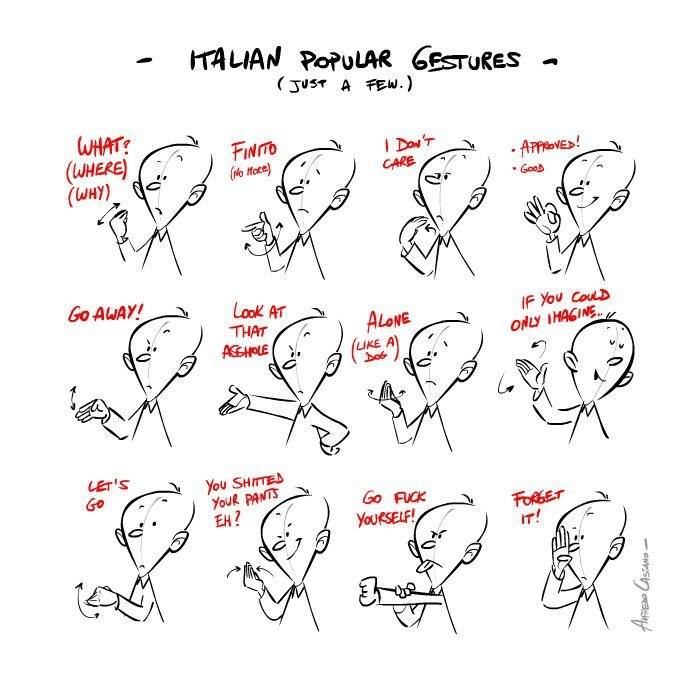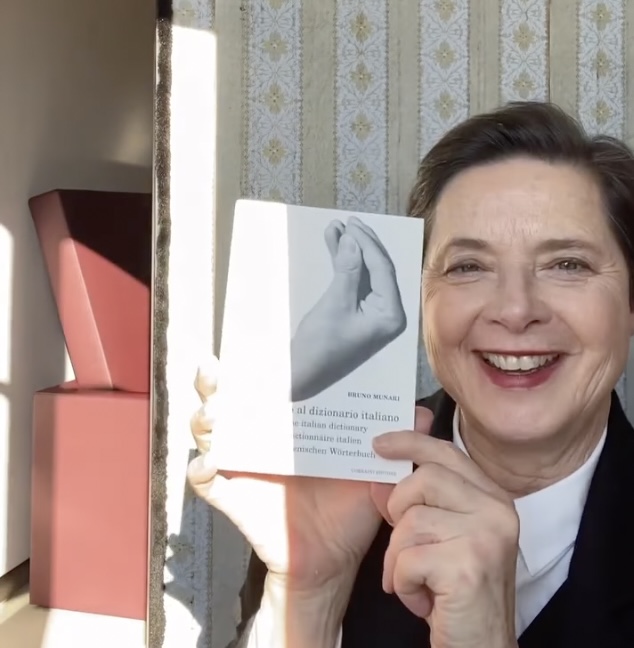The actress Isabella Rossellini, who was born in Rome and is bound by a visceral love for Italy, has made a short video where she gives Italian lessons to foreign friends, explaining typical expressions of non-verbal language and becoming agesture ambassador that distinguishes us Italians.
The typical Italian gesture
Among the characteristics that characterize us Italians, that of gestures is one of the most evident and meaningful. In fact, we know how eloquent non-verbal language is, promoted and encouraged in recent years among the various types of existing language. Sign language is often used in place of speech and becomes highly communicative. Italian gestures are, in fact, an anthropological and sociological phenomenon which connotes a range of attitudes, expressions, facial and hand movements, characterizes hearing speakers of the language during their verbal conversations.
Isabella Rossellini, ambassador of Italian gestures
Many are those who have so far been interested in promoting Italian gestures outside the clichés. Just in the last few hours, the actress Isabella Rossellini wanted to strengthen hers connection with the beautiful country giving a sort of lesson in Italian based on eloquent gestures more than words to foreign friends. To do this she used the book of Bruno Munari, attentive observer of gestures, which characterize our expressiveness to the point of becoming language.

Munari is the author of Supplement to the Italian Dictionary which the actress holds in her hands and quotes. It is a text published in 1963, which is proposed as a collection of images, instructions and information on the most common and famous gestures among Italians.
The typical gestures explained by Isabella Rossellini
In a short 1 minute video, Rossellini explains the most common gestures in English and Italian: the tulip hand gesture to say “What do you want? What do you say?“; it is a gesture characterized by grouping the fingers in order to recall the shape of a tulip or even a pine cone, swinging the hand towards the interlocutor. It has a double meaning: interrogative or critical. It is considered uone of the most characteristic gestures of the hearing Italian speaker . It has become a real one emoticons, inserted between the social chat icons.


The other gestures that Rossellini proposes refer to the appreciation and rejection of the taste of a food, using the forefinger that rotates on the cheek and, on the other hand, forefinger and thumb that swing rapidly. Subsequently, the actress also mentions the gesture related to madness, holding her hand in a tulip shape, this time upside down and placing it, at intervals, on her forehead together with the other variant which consists in rotating the index finger on a temple. Finally, Isabella Rossellini mimes the apotropaic gesture of making the horns to ward off bad luck and that of the umbrella to send an unwelcome interlocutor to hell. All done with irony and elegance.
Characteristics of gestures Made in Italy:
Gestures have always characterized every culture. It must be said, however, that the gestural language 'Made in Italy:' varies from north to south. In fact, some gestures are related togeographic area origin of the speaker. As in language and dialects, we can distinguish the standard gestures (applied throughout Italy, from north to south) ei regional gestures, which are locally disseminated, used and interpreted differently depending on the geographical area. Our broad and constant gestures are one of the aspects that most fascinate foreigners who have devoted much attention to and thoroughly analyzed this social and cultural phenomenon.

Origin
At the origin of this language there would be typical elements of ancient culture and history identifiable in modus operandi of the Greeks and Romans. Indeed, the Greeks are considered the absolute creators of this mode of communication. With the phenomenon of colonization, they brought this language in code, an alternative to the official written and spoken one, which spread enormously in the territories conquered in Magna Graecia. Precisely in the southern regions of Italy, gesture has spread and developed in a capillary way and has given rise to highly original forms of communication using gestures that make the whole body speak. A strong increase in the use of this type of language also occurred in the 1700s with the Italian Commedia dell'Arte, which valued the mimicry and gestures of comic art: from the stage and from street theatre, the gestures used were integrated into our daily speech. It's about gestures that they undoubtedly reinforce the main sense of the words and make it more direct.
The gestures mentioned by the actress willingly belong to our cultural fabric and are part of us!
Photo source: corraini.com page





